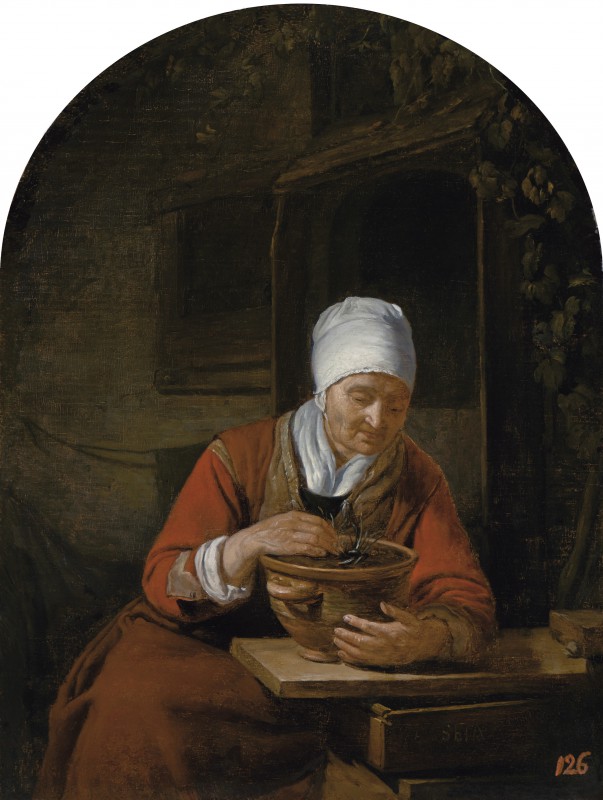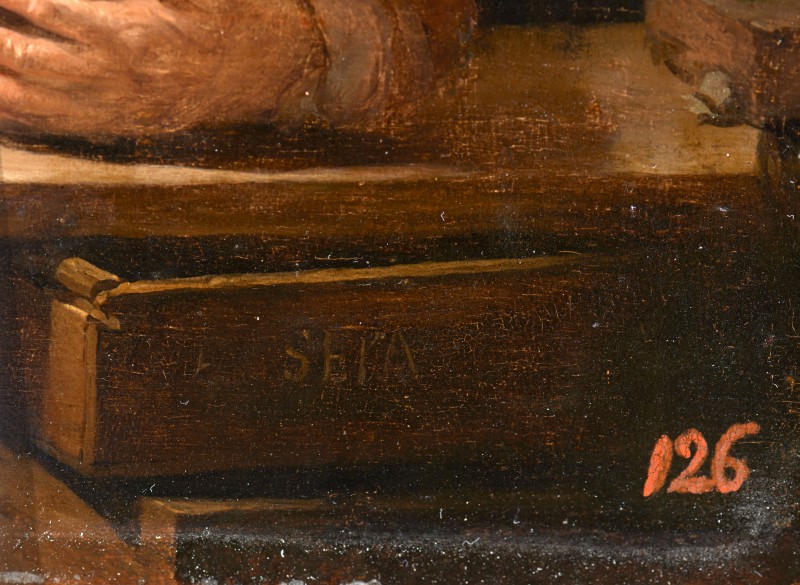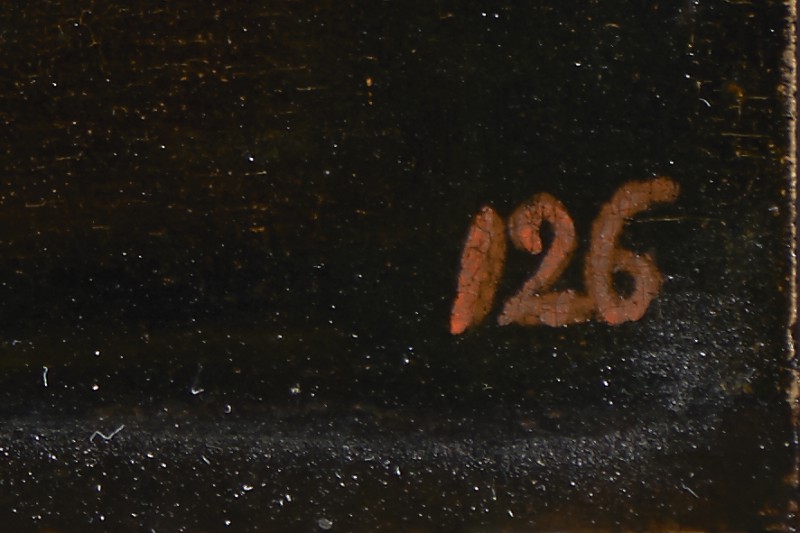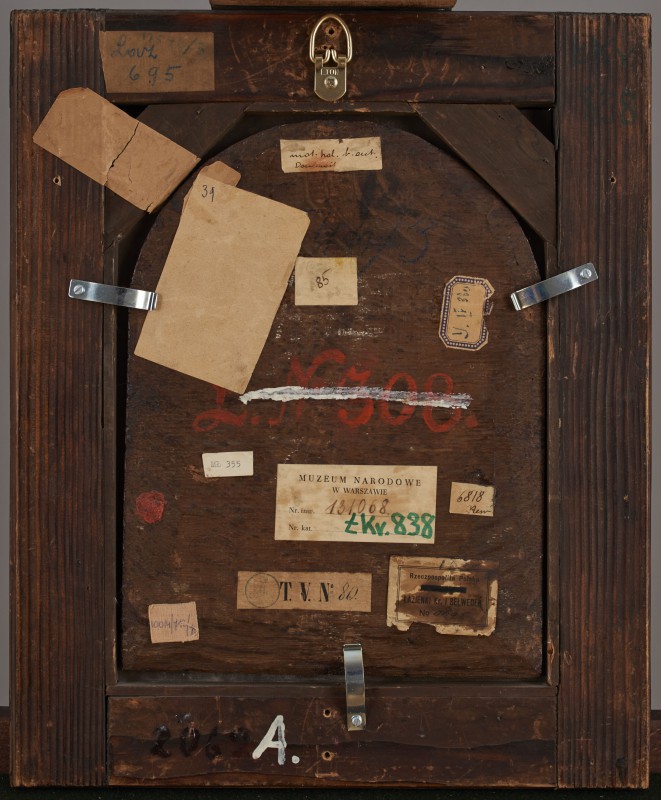An Old Woman Holding a Flower Pot
- Date
- 2nd half of the 17th c.
- Object type
- painting
- Technique
- oil
- Material
- oak
- Dimensions
- 29,2 x 22,0 cm
- Acquisition date
- 1783
- Location
- The Palace on the Isle - Portrait Room, ground floor
- Marks and inscriptions
- inscribed S E T A on the drawer of the table red number 126 of the Stanisław August collection, bottom right
- Place of Origin
- Netherlands (Europe)
- Owner
- The Royal Łazienki
- Museum number
- ŁKr 838
The painting was recorded in the catalogues of the Stanisław August collection without giving the author’s name, … . Hanna Benesz and Maria Kluk identified it correctly (documentation in the National Museum, Warsaw) as a 17th-century copy of a composition by Frans van Mieris—Dou’s pupil—in the Gemäldegalerie Alte Meister in Dresden. … .
The Dresden original of An Old Woman Holding a Flower Pot is signed F. van Mieris (inv. no. Gal.-Nr. 1746; … ). Naumann included this composition among van Mieris’ earliest works, executed in the mid-1650s, … . The painting has a pendant, which depicts An Old Man Holding a Wooden Tankard ( … )—probably the husband of the old woman; the paintings are therefore an example of the ‘Old Couple’ type—a topos well-known in Dutch art from the 16th century … . Otto Naumann suggested interpreting them as an allegory of two elements: the figure of the man with the tankard is an allusion to that which flows—water, and the woman with a flowerpot is a personification of earth … . As suggested by Quentin Buvelot … they can also be interpreted from a didactic perspective: The caring wife is cultivating a medicinal plant in a flowerpot which is to relieve the effects of her husband’s addictions. The man and woman’s poor clothing is indicative of the effects of the man’s pernicious behaviour and how it has affected his family.
We do not know whether the Łazienki painting originally had a companion piece without which its allegorical or moralizing context is lost and it simply becomes an ordinary genre scene. … . [See D. Juszczak, H. Małachowicz, The Stanisław August Collection of Paintings at the Royal Łazienki. Catalogue, Royal Łazienki Museum, Warsaw 2016, no. 74, pp. 282–283.]







